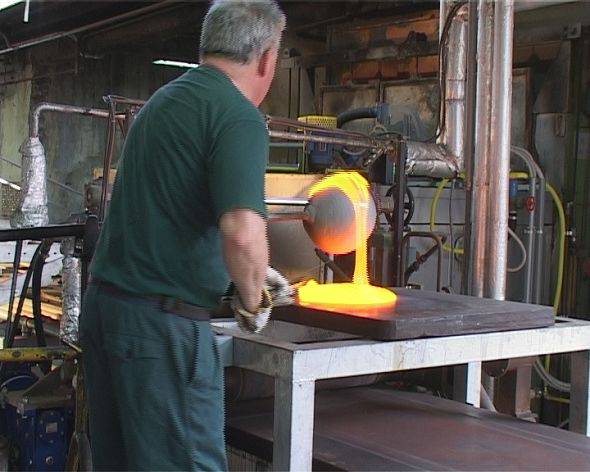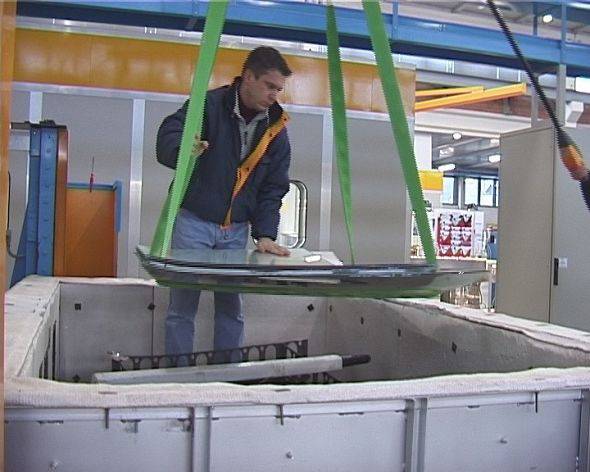Flat Glass
Mario Moretti
The need to shield a window with transparent material, was the reason that led to the production of glass sheets, starting right back from the Roman era. Sheets of small dimensions, no larger than 50x80 cm, were produced by casting the glass on a plate and pulling the end with pliers or other tools, until the whole mould was filled to the edges. These sheets can be easily recognised by the irregularities of the thickness, which is thin in the centre an often rounded at the edges. The main push towards the production of sheets probably came from the widespread use of polychrome stained-glass windows, connected to the use of lead, from the 11th century, in the construction of Gothic cathedrals in Europe. But it was from the 17th century that more sophisticated and less costly methods were developed to produce increasingly larger sheets with uniform consistent thickness. The sheets found wide-scale use in the civil building field too, up to our times with the development of structural facades, in which whole sides of skyscrapers and commercial buildings are made in glass and the use of glass in forms of transport.
After the use of glass casting, other techniques which followed were the disc system, the cylinder one, the casting between rollers and, in 1900, with the advent of continuous production, first came pulled glass and then, from the beginning of the 60s, the float technique, which has completely replaced all other technologies.

Production Techniques
Printing the glass directly from the incandescent mass was the dream of many researchers, especially for producing sheets. Attempts were made to prime the glass, via iron bars, to lift it in…
Transformation of Flat Glass
In glassmaking jargon, second processes means all treatments that a sheet can be subjected to and which can be applied to the edges and surface of the sheet.
Tempering
Tempering is a thermal or chemical treatment whose purpose is, unlike that for annealing, to compress the surface layer of the glass, thus improving its resistance to breaking.
Laminated or Stratified Glass
The French chemist invented stratified glass in 1903 by pure chance.It consists of two or more sheets of common or tempered glass, glued together by thin layers of plastic material, …
Coated Glass
This is industrially produced glass on whose surface metallic oxides are powdered so as to obtain a very thin layer (from 0.01 to 0.8 micro-metres).This brings about a change of the …

Sealed Insulating Windows
The principle of the production of insulating windows entails immobilizing, between two sheets of sealed glass, air that, trapped like this, has a low thermal conductibility. The windows …
Silver plating
Glass mirrors can be used in a broad range of applications in building, automobiles and systems for the transformation of solar energy into heat.Whatever technique is used, the silver …
Advances of flat glass
Starting in 1970, the evolution of flat glass has rapidly advanced.Some examples can give us an idea of the advances made in the glass industry in various applications: - Thermal and …
Cold-decoration
A lot of glass-works are the result of the ability of the craftsman who successively embellishes the surfaces with so-called cold techniques. In many cases, the ability to decorate …
